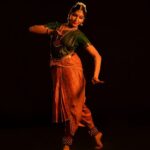Introduction -:
The classical dance form originated from the Natya Shastra. There are 8 classical dance forms in India as per the source and scholars. Each dance tradition originates and comes from a different state and region of India. Indian classical dancing started around 200 BCE in India, as a joyful and celebratory activity, often in devotion to Hindu deities. When dancers perform classical Indian dancing, they wear traditional clothes including sarees, lehengas and kurtas. The Natya Shastra is the foundational treatise for classical dance of India and this text is attributed to the ancient scholar Bharata Muni. Indian classical dances are traditionally performed as an expressive drama dance form of religious performance art, related to Vaishnavism, Shaivism, Shaktism, pan-Hindu Epics and the Vedic Literature or a folksy entertainment that includes story telling from Sanskrit or regional language plays. The classical dance forms recognised by the Sangeet Natak Akademi.

Indian Classical Dances are:-
1. Bharatnatyam -: Tamil Nadu
2. Kathak -: Uttar Pradesh
3. Kuchipudi -: Andhra Pradesh
4. Odissi -: Odisha
5. Kathakali -: Kerala
6. Sattriya -: Assam
7. Manipuri -: Manipur
8. Mohiniyattam -: Kerala
Bharatnatyam -:
Bharatnatyam is based on performance and aesthetic ideas outlined in classics such as Bharata’s Natya Shastra. It offers a large collection of songs in Telugu, Tamil and Sanskrit.
Kathak -:
Kathak is the main dance of northern India and it is still extensively practised in Uttar Pradesh, Rajsthan, Delhi, Madhya Pradesh and even regions of western and eastern India.
Kuchipudi -:
Kuchipudi one of India’s primary dance genres, originated in Andhra Pradesh, where it involved significantly as a result of the Bhakti movement that began in the 7th century AD.
Odissi Dance -:
Odissi dance originated in Odisha, India’s easternmost state, where it was first performed as part of temple duty by Maharis or female temple employees.
Kathakali -:
Kathakali or story play emerged in the seventeenth century in Kerala , Southern India.
Sattriya Dance-:
Sattriya dance refers to the body of dance and danced theatre produced in Assam’s sattras or monasteries during the sixteenth century.
Manipuri Dance -:
Manipuri dance emerged in Manipur in Northeastern India and is rooted in the Vaishnava beliefs to the Meiteis, Manipur Valley people.
Mohiniyattam -:
Mohiniyattam originated in Kerala in southern India and is named after the mythical enchantress Mohini.
